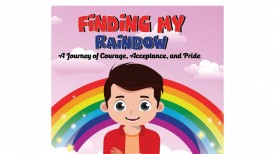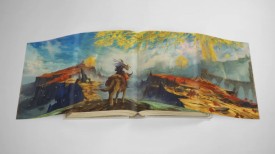Andrea Stuart Tells a Tale of Sugar and Slavery in New book
Author Andrea Stuart tells the story of her family through her new book "Sugar in the Blood" by depicting incidents that make up the history of Barbados.
Author Andrea Stuart weaves her story around the history of slavery and sugar in Barbados. Stuart's ancestors came to the land in 1630 and her great-great-great-great-great-great-great-great-grandfather, who was originally a blacksmith in England turned to sugar plantation. At that time, the demand for crops was on the rise and he took full advantage of the situation. Stuart is a descendent of a relationship an ancestor had with one of his slaves.
Stuart reveals that it took four years of research for her book to fully accept the reality of her family. It was hard for her to accept the fact that one side of her family actually owned the other side. Stuart also reveals the harsh truth that it was quite common in the Caribbean to have two family groups. A man usually had his legitimate white wife and their children and side by side also had a family with an enslaved woman.
In her book, Stuart also states that it was quite common for slave owners to baptize the slave woman they had a "longer" relationship with. The author says that while these slave women took this to be a very "virtuous gesture", it was in fact a case of actually "raping underage girls."
Though Stuart's grandparents belonged to the slave line, it's quite ironic that they or rather her great-grandparents returned to owing a sugar plantation. Stuart justifies this act by stating that owing a plantation was like being on the top of a social tree. Hence, all successful businessmen wanted to own a plantation and as sugar was considered a powerful crop for big money, her great-grandparents decided on owing a plantation.
© 2023 Books & Review All rights reserved.
Popular Now
1
Books to Read After 'Fourth Wing': Top Picks for Fantasy and Romantasy Fans

2
‘The Secret Public’ by Jon Savage Book Review: An Insightful Look Into the LGBTQ Influence

3
Stephanie Regalado's 'If They Only Knew' Column Is Now A Book, Unleashing 60 Anonymous True Stories to Empower Women

4
'No Wire Hangers' Scene That Almost Did Not Happen: New Book Reveals Faye Dunaway's Struggles

5
Rare First Edition of Aphra Behn's Novel 'Oroonoko' Discovered in Kent: A Historic Literary Find

Latest Stories
Book Reviews
‘The Secret Public’ by Jon Savage Book Review: An Insightful Look Into the LGBTQ Influence

Book News
Stephanie Regalado's 'If They Only Knew' Column Is Now A Book, Unleashing 60 Anonymous True Stories to Empower Women

Book News
'No Wire Hangers' Scene That Almost Did Not Happen: New Book Reveals Faye Dunaway's Struggles

Book Reviews
‘The Perfect Couple’ by Elin Hilderbrand Book Review: A Captivating Summer Mystery

Book News
New Book ‘The Franchise’ Reveals Penguins President Kyle Dubas’ ‘Biggest Mistake’ as Maple Leafs GM











